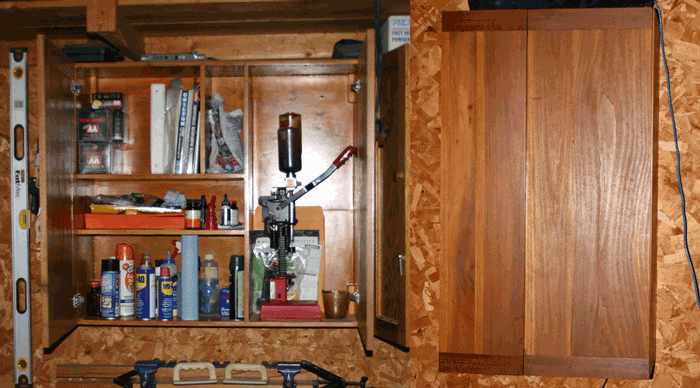| Author |
Message |
|
Gary B. Ledford
Location: Southern California Joined: 14 Feb 2009
Posts: 38
|
 Posted: Sun 10 Jan, 2010 1:55 pm Post subject: Using poplar for a sword handle Posted: Sun 10 Jan, 2010 1:55 pm Post subject: Using poplar for a sword handle |
 |
|
Would poplar be a hard enough wood for a handle for a longsword used for WMA practice? I carved a nice one from some 2" square project poplar I got at Lowe's, and I was all set to wrap it in cord and veggie tanned pigskin. Then I started researching on this and other forums, and never see poplar listed as good handle wood.
I am not at all concerned with historical accuracy, I just want wood that is hard enough to hold up under use, but does not have the acidity of Oak, where I have to be concerned about damage/ corrosion to the tang.
I just heard that DBK uses poplar for his custom scabbards and handles; would it need to be kiln dried to be hard enough to make a good handle?
Beware the Jabberwock my son,
The jaws that bite, the claws that catch!
Last edited by Gary B. Ledford on Sun 10 Jan, 2010 2:19 pm; edited 1 time in total
|
|
   |
 |
Jared Smith

|
 Posted: Sun 10 Jan, 2010 2:18 pm Post subject: Posted: Sun 10 Jan, 2010 2:18 pm Post subject: |
 |
|
The "stabilized" wood mentioned in some maker's web sites is really glue resin impregnated composite wood laminate. That is tougher than natural wood.
As a SouthEast US wood worker, poplar is one of my preferred, cheap, and local species. I use it for cabinets and a various things when premium external appearances are not the first priority. It will be fine as it came from Lowes (kiln dried already.) Unless you plan to beat on it directly with a sledge hammer, or test it for aging affects over 10 years time, I doubt you will notice much difference between it and the "stabilized" materials.
The cabinet on the left is from "garage aged" poplar picked up green directly from the saw mill and used around 6 months later. It is fine after 18 years, and hanging in garages at two different homes. It has around 70 pounds of lead and gun powder, shot shell related reloading supplies in it most of the time. The internal dividers and shelves you see are only 5/8" thick (about 16 mm.) I have had as much as 150 lbs of stuff in it for half a year or so. The cabinet on the right (also holds a heavy load of gun reloading supplies) was made from kiln dired poplar purchased at Lowes about 8 years ago. The bread board door faces instantly warped while sawing through the finished panel. Nothing else has changed with it over the past years.
 Attachment: 154.45 KB Attachment: 154.45 KB

Absence of evidence is not necessarily evidence of absence!
|
|
  |
 |
|
Ken Speed
|
 Posted: Sun 10 Jan, 2010 8:32 pm Post subject: Posted: Sun 10 Jan, 2010 8:32 pm Post subject: |
 |
|
|
Poplar is a good secondary wood in cabinetry and good (as Jared said) for cabinets where external appearance is unimportant. Poplar is not a particularly stable wood but in a piece as small as a sword handle this shouldn't be a concern. I have noticed that there is wide range in the hardness of poplar lumber due to either growing or soil conditions. A simple test is to see how easily the wood marks with your thumbnail; if you can, get the harder wood.
|
|
  |
 |
Jesse Belsky
Industry Professional

|
 Posted: Sun 10 Jan, 2010 9:25 pm Post subject: Posted: Sun 10 Jan, 2010 9:25 pm Post subject: |
 |
|
Hi Gary. For what its worth, i use poplar for the grips on all the aluminum bladed stage weapons i make. Thus far they seem to have held up just fine. Since its not stabilized there is bound to be some minor shifting in the wood over time. The critical thing to my mind is that the construction of the sword can accommodate those changes. All my weapons are compression fit with a pommel nut or threaded pommel so that the blades can be easily maintained, so when the grip settles/loosens etc, it can be tightened up. If you are wedging the grip AND pommel onto the tang before attaching the grip in halves with epoxy, a la Albion, then poplar would still probably work fine. The only circumstance i could see a problem with would be if you were doing a compression peen. Then if the grip shrunk you would have a loose hilt assembly......
As the historical record shows, grips don't last forever, especially on combat weapons. Oakeshott talks a lot about grip replacements and re-hiltings. Since you've already made the grip, you should use the hell out of it. Then if it doesn't last at least you'll know you're in good company!
|
|
   |
 |
Maurizio D'Angelo

|
 Posted: Mon 11 Jan, 2010 6:48 am Post subject: Posted: Mon 11 Jan, 2010 6:48 am Post subject: |
 |
|
I agree in general terms. A preference for woods that have elastic properties.
Ciao
Maurizio
|
|
   |
 |
Sean Flynt

|
|
   |
 |
|
|

